Asus A8R32-MVP Deluxe: First ATI RD580
by Wesley Fink on March 1, 2006 9:00 AM EST- Posted in
- Motherboards
Basic Features: Asus A8R32-MVP
The BIOS adjustments of the A8R-MVP were a pleasant surprise for a low-end board, but they were not as extensive as those seen on top-end Asus boards like the 8-phase A8N32-SLI. The BIOS for the A8R32-MVP is very complete, and does not really have any Asus high-end adjustments missing at all. The available adjustment ranges have been improved over the available options on the A8R-MVP, and Asus has added more options for processor and chipset voltages.
The RD480-based Asus A8R-MVP has a very wide range of overclocking controls for a board in the $100 price range, but it is weak in voltage adjustments and memory Command Rate settings. The RD580-based A8R32MVP, for the most part, corrects those deficiencies by providing finer adjustments, a larger number of BIOS-adjustable voltages, and higher vCore settings. Most users will be pleased with the additions and refinements. The A8R32-MVP stands up well against just about any overclocking board available in terms of the available overclocking options and the range of control available. The Asus designers did an excellent job of listening to buyers of the earlier A8R-MVP and adding the most asked-for improvements.
| Asus A8R32-MVP Deluxe | |
| CPU Interface | Socket 939 Athlon 64 |
| Chipset | ATI RD580 Northbridge - ULi M1575 Southbridge |
| Bus Speeds | 200 to 400MHz in 1MHz Increments |
| Memory Speeds | DDR200,266,333,366,400 (433,466,500 with Rev. E AMD) |
| PCIe Speeds | 100 to 150MHz in 1MHz Increments |
| PCI/AGP | Fixed at 33/66 |
| Core Voltage | Auto, 0.8V to 1.4V-1.55V* in 0.025V increments PLUS 0.1V & 0.2V with vCore Over-Voltage (Maximum vCore 1.6V to 1.75V) *Max Voltage depends on CPU ID. To 1.55V with Clawhammer |
| CPU Clock Multiplier | 4x-25.5x in 0.5X increments |
| DRAM Voltage | Auto, 2.6V to 3.2V in .05V increments |
| HyperTransport Frequency | 1000MHz (1GHz) (Stable in overclocking to 1500+ HT) |
| HyperTransport Multiplier | Auto, 1X to 5X |
| Northbridge Over-Voltage | Auto, Disabled, Enabled Enabled adds 3 New Voltage Options Below |
| Core Voltage | 1.2V, 1.3V, 1.4V, 1.5V |
| HyperTransport Bus Voltage | 1.2V, 1.3V, 1.4V, 1.5V |
| PCI Express Voltage | 1.2V, 1.3V, 1.4V, 1.5V |
| Southbridge Overvoltage | Auto, Disabled, Enabled (+0.1V) |
| PEG Link Mode | Auto, Disabled, Normal, Fast, Faster |
| PEG Buffer Length | Auto, Short, Long, Longer, Longest |
| AI Overclocking | Manual, Auto*, Standard*, Overclock Profile**, AI N.O.S.** *CPU Frequency and Other OC Parameters Set Automatically **Manually Set CPU Frequency and Other Parameters Auto Adjust |
| Overclock Profile Options | OC 3%, 5%, 10%, 15%,20%,30% |
| AI N.O.S. Options | OC 3%, 5%, 7%, 10%, 15%, 20% |
| Memory Slots | Four 184-pin DDR DIMM Slots Dual-Channel Configuration Regular Unbuffered or ECC Memory to 4GB Total |
| Expansion Slots | 2 PCIe x16 1 PCIe x1 3 PCI Slots |
| Onboard SATA/RAID | 4 SATA2 Drives by ULi M1575 (RAID 0,1,1+0,5,JBOD) PLUS 2 SATA2 Drives by Silicon Image 3132 (RAID 0,1) |
| Onboard IDE/IDE RAID | Two Standard ATA133/100/66 (4 drives) |
| Onboard USB 2.0/IEEE-1394 | 8 USB 2.0 ports supported by ULi M1575 2 Firewire by TI 1394a |
| Onboard LAN | PCIe Gigabit by Marvel Yukon 88E8053 PCI Gigabit by Marvel 88E8001 |
| Onboard Audio | Azalia HD Audio by Realtech ALC882 codec |
| BIOS Revision | AMI 307 (2/15/06) |
The BIOS adjustments of the A8R-MVP were a pleasant surprise for a low-end board, but they were not as extensive as those seen on top-end Asus boards like the 8-phase A8N32-SLI. The BIOS for the A8R32-MVP is very complete, and does not really have any Asus high-end adjustments missing at all. The available adjustment ranges have been improved over the available options on the A8R-MVP, and Asus has added more options for processor and chipset voltages.
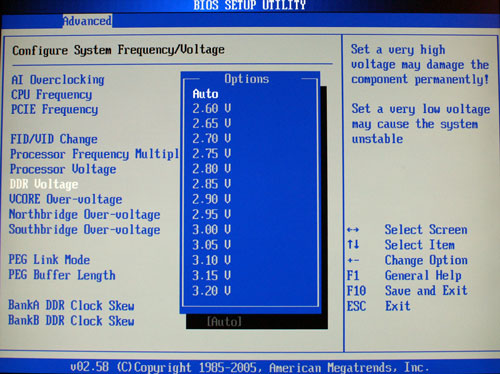
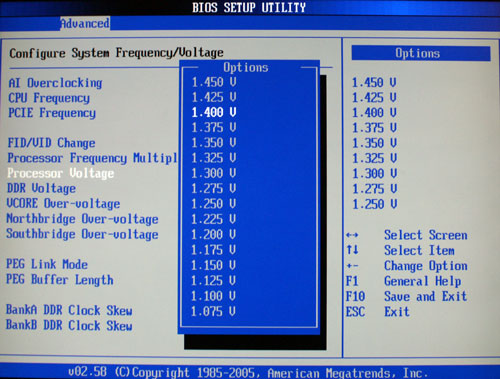
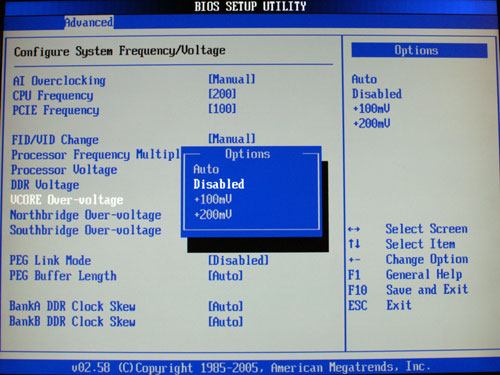
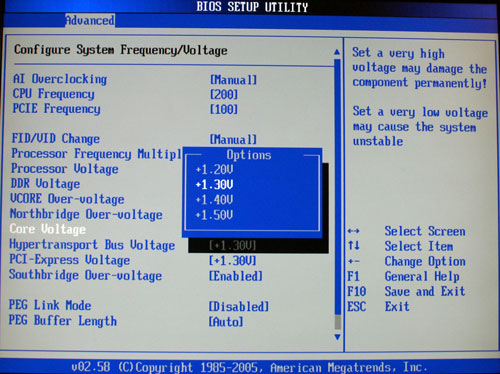
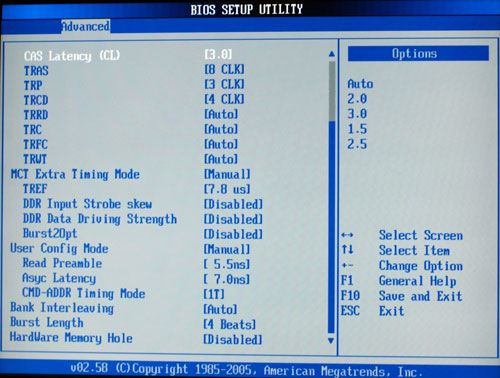
The RD480-based Asus A8R-MVP has a very wide range of overclocking controls for a board in the $100 price range, but it is weak in voltage adjustments and memory Command Rate settings. The RD580-based A8R32MVP, for the most part, corrects those deficiencies by providing finer adjustments, a larger number of BIOS-adjustable voltages, and higher vCore settings. Most users will be pleased with the additions and refinements. The A8R32-MVP stands up well against just about any overclocking board available in terms of the available overclocking options and the range of control available. The Asus designers did an excellent job of listening to buyers of the earlier A8R-MVP and adding the most asked-for improvements.










65 Comments
View All Comments
superkdogg - Wednesday, March 1, 2006 - link
If you had been working for half the time you have been whining on every forum you can find, you could have bought two SLI-Experts or whatever motherboard you think has no problems.Dude, get over it. The A8R was not exactly as reviewed here. Is that disappointing? Yep. Unfair? Maybe. Fact is, anybody who bought it for the "serious overclocking" that you're referencing would do a vMod and get on with it. I have two A8R's. One is dead because I was stupid and tried a vMod. My soldering needs work. I bought a second one on refurb for $75 because I realized that in the best case, that vMod might get me another 150 MHz. You know what else would get me 150 MHz? Dusting off a Pentium Pro in my basement. I could also get the 2% benefit that 1T timing would give me from chance, since most 'marks are + or - 2-3%.
I was burned by the same problem you were. I have learned to live with it and am currently happily running 300x9 with ram @ 2.5-4-4-9, 2T (166/200). That's not bad for standard blue heatspreader Patriot that runs about $80 per gig.
DigitalFreak - Wednesday, March 1, 2006 - link
Omid, is that you?yacoub - Sunday, February 19, 2006 - link
Should have run the 3DMark benches with the 7800GTX like all the other boards so at least we could see if the board itself (the object of review) offered any particular performance gain or loss. :[yacoub - Sunday, February 19, 2006 - link
oic now, thanks. :)green bars. tricksy hobbitses!
Missing Ghost - Sunday, February 19, 2006 - link
I am unhappy with the pictures of the board included in this review. I can't see anything on them because they are too dark. I couldn't even tell if they were a firewire port on the back.Wesley Fink - Wednesday, March 1, 2006 - link
The pictures are not overly dark on several monitors we tried in reading the review. I'm sorry I don't have advice in that area.As stated in the review, both Firewire ports are on an accesory bracket included with the motherboard. The bracket will fit in an empty slot or can be routed to case firewire ports.
Googer - Sunday, February 19, 2006 - link
What Phase Power is this motherboard using? 2,3,4,8,24?Beenthere - Sunday, February 19, 2006 - link
Any properly designed 3-phase or greater CPU vcore circuit that complies with AMD's VRM64/T specs will work just fine. If however a mfg. delivers a poor circuit design or uses inferior MOSFETS, caps, etc., then you experience Vcore instability which causes all kinds of operational Hell. More phases just lowers the ripple and spreads the load across more MOSFETS.Beenthere - Sunday, February 19, 2006 - link
BTW, if you check the A8R-MVP, the A8N series and the Asus P5GL-MX you'll see that all of these mobos have been confirmed to have vcore instability problems when tested at the mobo with a DVM or scope. Asus seems to have some significant mobo engineering issues they can't resolve... and that are not present on other brands of mobos using the same chipsets.Ecmaster76 - Sunday, February 19, 2006 - link
Do you work for DFI or Abit or something? This is the third site where I have ran into you flaming Asus constantly!(where did I put that troll repellant)
Seriously, link some proof of said Vcore instability. Show me scope printouts of the Vcore lines (and the 12v rails that were used to drive it)